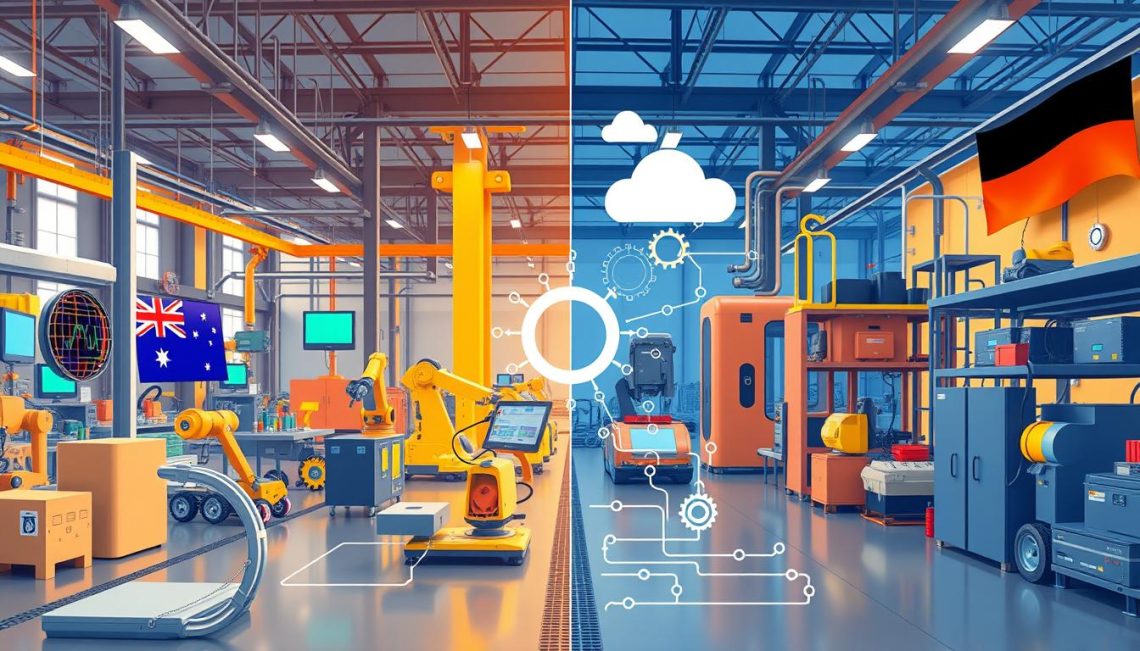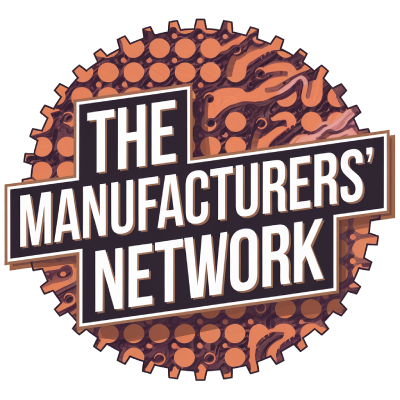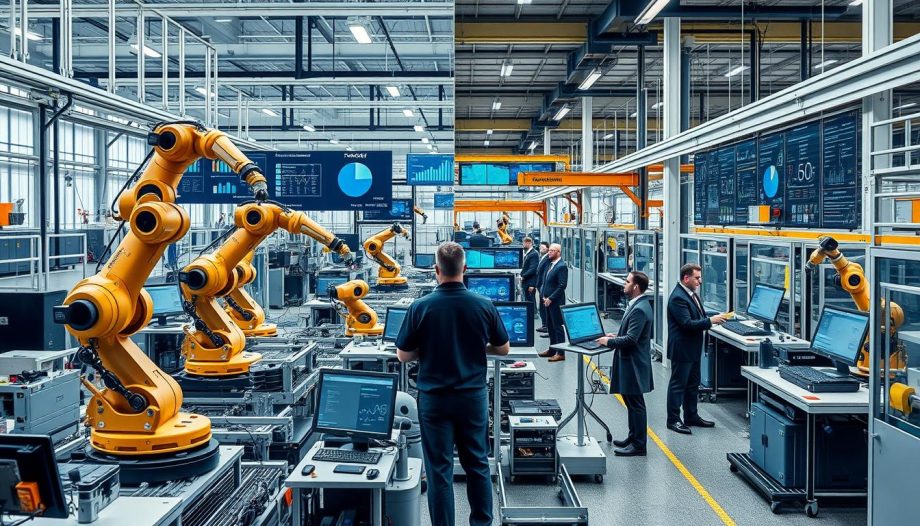As we enter a new era of technology, Industry 4.0 is reshaping the landscape of manufacturing, particularly for small and medium-sized enterprises (SMEs) in Australia and Germany. This digital transformation in manufacturing is characterized by the integration of cutting-edge technologies that enhance productivity, efficiency, and overall manufacturing innovation. Across both nations, Australian manufacturing SMEs and German manufacturing SMEs are at the forefront of adopting these advancements, each employing distinct strategies to navigate the evolving industrial terrain.
With the rise of automation and data exchange, understanding the impacts of Industry 4.0 is becoming increasingly critical. In the following sections, we will delve into the specific adoption rates, use cases, and innovative practices that exemplify how these SMEs are leveraging technology to thrive in a competitive market.
Understanding Industry 4.0 and Its Impact
Industry 4.0 represents a transformative phase in manufacturing, characterized by the integration of smart technologies and innovative practices. The primary aim is to enhance production processes, creating more efficient and adaptable manufacturing environments.
What is Industry 4.0?
The Industry 4.0 definition encapsulates the fourth industrial revolution, distinguished by the amalgamation of physical and digital systems. Unlike previous revolutions that focused largely on mechanization, Industry 4.0 emphasizes connectivity and data exchange among machines, systems, and humans. This evolution paves the way for highly customized production, responsive supply chains, and improved operational productivity.
Key Technologies Driving Industry 4.0
Various technologies in Industry 4.0 are reshaping manufacturing landscapes. Key examples include:
- Internet of Things (IoT): Connects devices and enables real-time data collection.
- Artificial Intelligence (AI): Enhances decision-making through intelligent analytics.
- Big Data: Processes large datasets for insights that drive operational improvements.
- Advanced Robotics: Facilitates automation and precision in production tasks.
- Cloud Computing: Offers scalable resources and promotes seamless collaboration across platforms.
Benefits of Implementing Industry 4.0 Solutions
Adopting Industry 4.0 solutions yields numerous benefits of Industry 4.0 for manufacturing SMEs. Companies experience:
- Increased Efficiency: Streamlined processes reduce downtime and enhance production rates.
- Cost Reduction: Optimized resource management leads to significant savings.
- Personalized Customer Solutions: Data-driven insights enable tailored products and services.
- Enhanced Flexibility: Agile manufacturing processes adjust quickly to market demands.

Industry 4.0 at Australian and German Manufacturing SMEs
The integration of Industry 4.0 technologies within manufacturing SMEs has become a vital aspect of competitiveness in both Australia and Germany. This section explores the adoption rates in these regions, showcasing specific use cases and innovative practices that highlight the unique paths taken by SMEs in both countries.
Comparison of Adoption Rates
Recent data indicates a notable difference in the adoption rates Industry 4.0 among Australian and German manufacturing SMEs. German firms have consistently shown higher rates of technology adoption, driven by strong government support and a robust industrial infrastructure. On the other hand, Australian SMEs are gradually increasing their adoption rates but face challenges such as market size and investment capacity. These variations provide an interesting technology adoption comparison that sheds light on the factors affecting each country’s progress.
Specific Use Cases in Australia
Several Australian SMEs have successfully implemented Industry 4.0 solutions, showcasing the benefits of technology integration. For instance, a leading Australian food manufacturing company has adopted automated systems to optimize production and reduce waste. Another example includes a local textile manufacturer that embraced IoT technology to improve supply chain visibility and efficiency. These case studies Australian SMEs highlight how innovative applications of technology can drive substantial improvements in productivity and competitiveness.
Innovative Practices in Germany
Germany continues to dominate in terms of manufacturing innovation, with numerous SMEs leading the charge in Industry 4.0 adoption. For example, a prominent automotive parts supplier has integrated artificial intelligence in their production lines, enhancing quality control and operational efficiency. Additionally, a family-owned machinery manufacturer utilizes advanced robotics to streamline processes and increase output. These examples underscore the significance of German manufacturing innovation, reflecting a commitment to pushing the boundaries of technology in the manufacturing sector.

Challenges Faced by SMEs in Adoption
The path to integrating Industry 4.0 technologies is fraught with challenges for Australian and German manufacturing SMEs. As these organizations strive to innovate and remain competitive, they are increasingly confronted with financial constraints and a widening skills gap within the workforce. Understanding these challenges is crucial for developing effective strategies to support SMEs during this transformative period.
Financial Constraints and Investment Needs
One of the primary challenges in Industry 4.0 adoption relates to SME financial constraints. Upgrading to advanced technologies often entails significant investment that many small to medium enterprises find daunting. Such financial hurdles can impede growth and innovation, as the budget required for infrastructure improvements, equipment purchases, and research is not readily available. Both Australia and Germany offer various funding mechanisms, such as grants and loans, to encourage technological advancements, but many SMEs remain unaware of these options or find the application processes cumbersome.
Skills Gap and Workforce Development
The pressing workforce skills gap is another barrier that hampers the seamless transition to Industry 4.0. As manufacturing evolves with the advent of automation and smart technologies, there is an urgent need for workforce development initiatives that equip employees with the necessary skills. Labor market studies reveal that a substantial number of workers lack the appropriate training, making it challenging for SMEs to implement new systems effectively. Addressing this skills gap through targeted training programs and partnerships with educational institutions is essential for creating a workforce capable of navigating the complexities of modern manufacturing processes.

